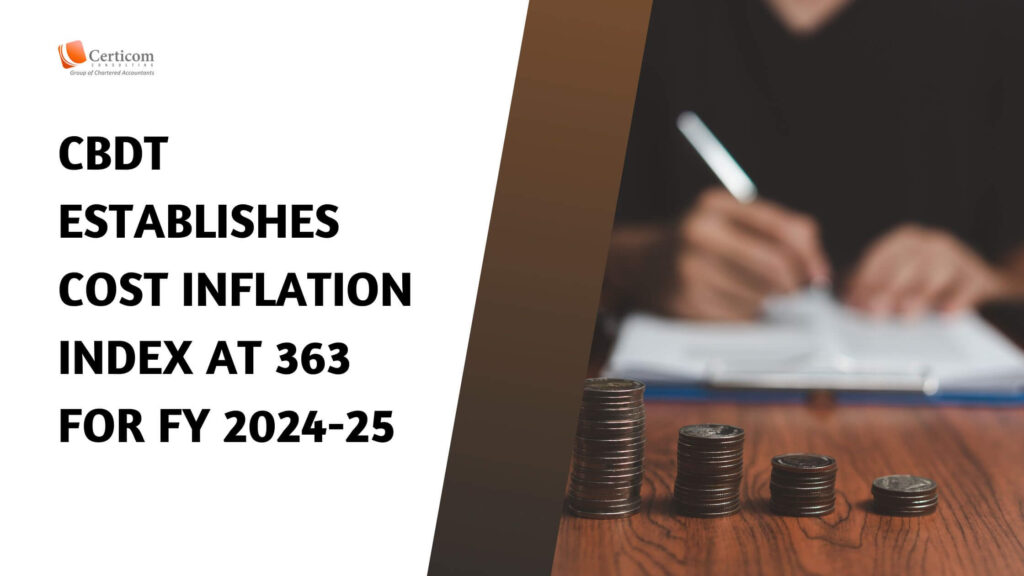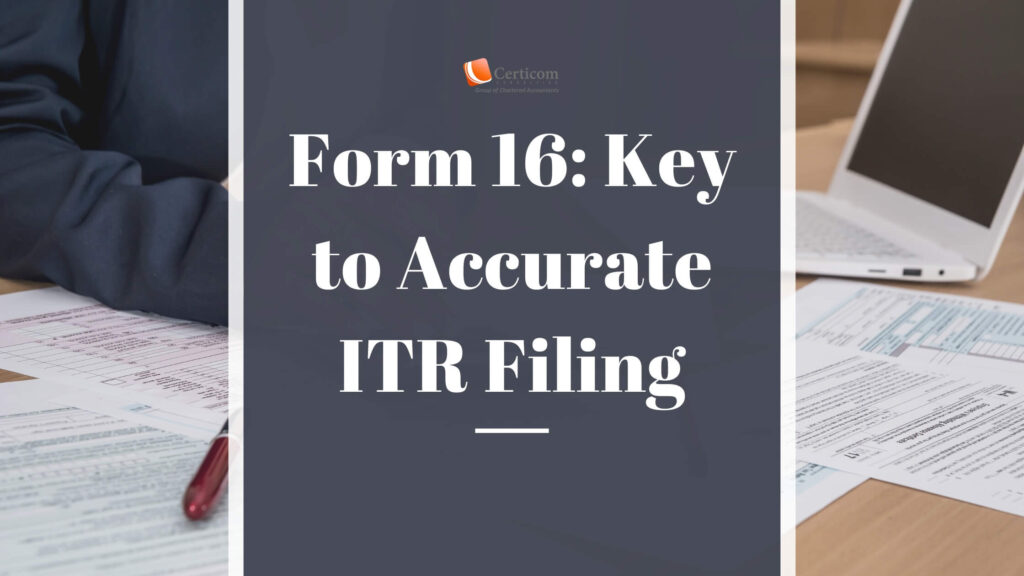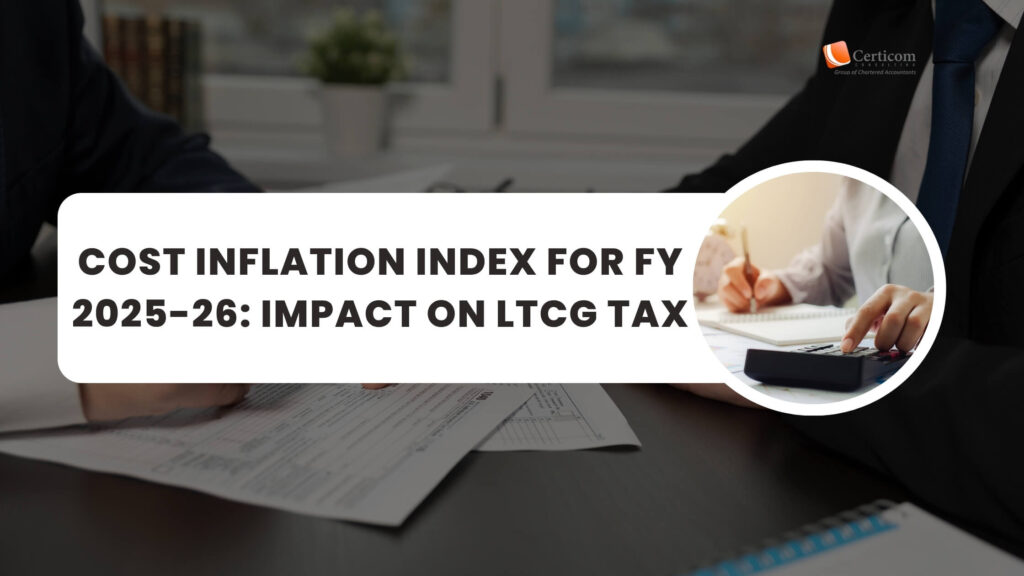CBDT Sets Cost Inflation Index at 363 for FY 2024-25

The Income Tax Department has announced the Cost Inflation Index (CII) for the fiscal year starting April 2024, which will be used to calculate long-term capital gains from the sale of immovable property, securities, and jewelry. The CII allows taxpayers to adjust for inflation when computing gains from the sale of capital assets.
For the financial year 2024-25, relevant to the assessment year 2025-26, the CII is set at 363, according to a notification from the Central Board of Direct Taxes (CBDT). In comparison, the CII for the previous fiscal year was 348, and for the 2022-23 financial year, it was 331.
The Cost Inflation Index (CII) represents the rise in prices of goods and services due to inflation over time. For the financial year 2023-24, the CII was set at 348.
For the following financial year, 2024-25, the CII has been updated to 363, indicating an increase of 15 points, which equates to an annual inflation rate of approximately 4.3 percent. This aligns with the retail inflation rate of 4.83 percent recorded in April 2024. Taxpayers generally favor a higher CII as it enables them to claim larger tax deductions.

The Cost Inflation Index (CII) is notified annually under the Income-tax Act, 1961. It is commonly used to calculate the “indexed cost of acquisition” when determining capital gains at the time of selling a capital asset.
Typically, an asset must be held for more than 36 months (24 months for immovable property and unlisted shares, and 12 months for listed securities) to qualify as ‘long-term capital gains’.
As the prices of goods increase over time, reducing purchasing power, the Cost Inflation Index (CII) is used to determine the inflation-adjusted purchase price of assets. This helps in accurately computing taxable long-term capital gains (LTCG).
Related Post
Cost Inflation Index for FY 2025-26: Impact on LTCG Tax
Loan Interest Deductions: How to Claim and Avoid Tax Scrutiny
Book A One To One Consultation Now For FREE
How can we help? *




